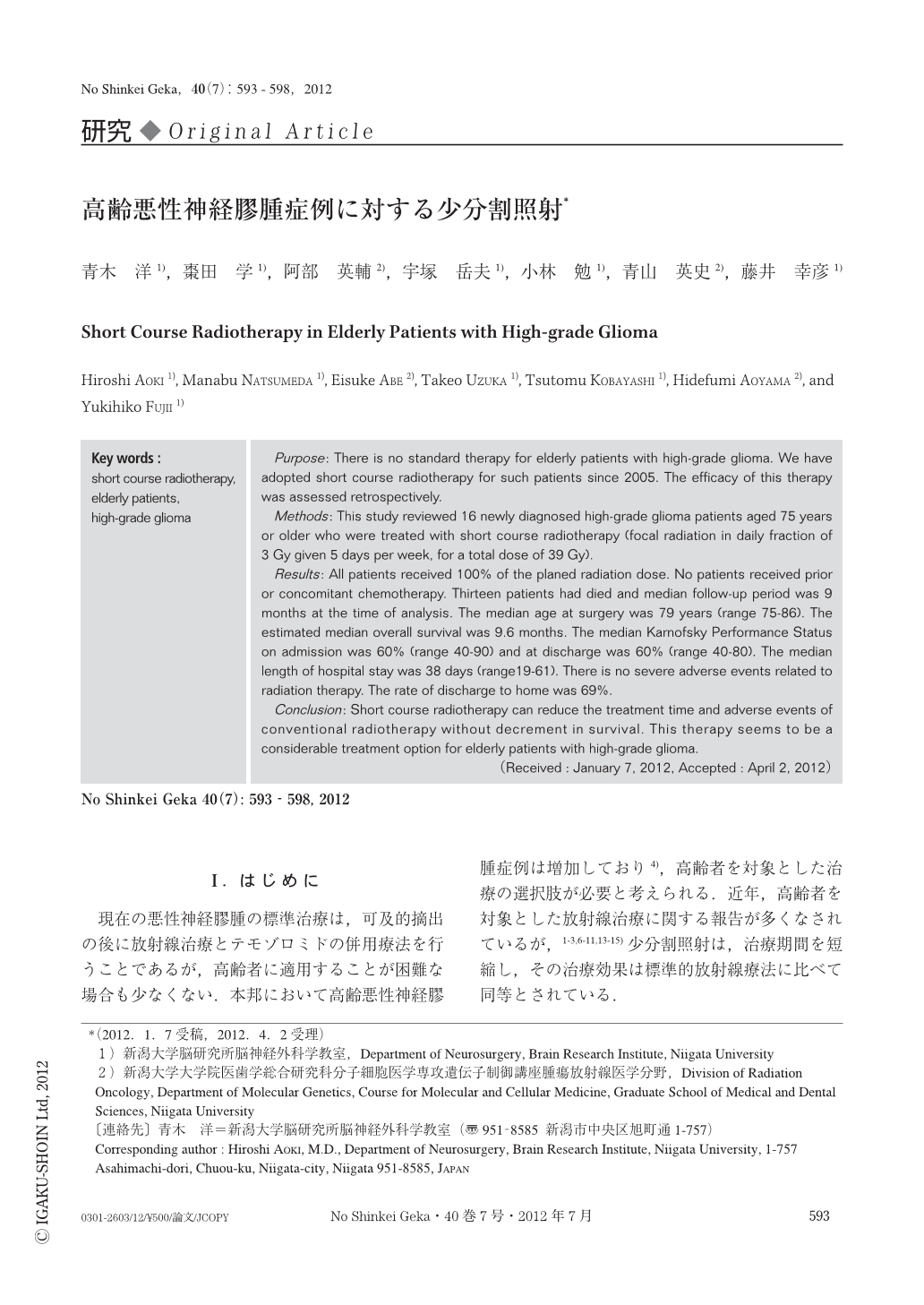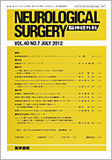Japanese
English
- 有料閲覧
- Abstract 文献概要
- 1ページ目 Look Inside
- 参考文献 Reference
Ⅰ.はじめに
現在の悪性神経膠腫の標準治療は,可及的摘出の後に放射線治療とテモゾロミドの併用療法を行うことであるが,高齢者に適用することが困難な場合も少なくない.本邦において高齢悪性神経膠腫症例は増加しており4),高齢者を対象とした治療の選択肢が必要と考えられる.近年,高齢者を対象とした放射線治療に関する報告が多くなされているが,1-3,6-11,13-15)少分割照射は,治療期間を短縮し,その治療効果は標準的放射線療法に比べて同等とされている.
われわれは,2005年以降,75歳以上の膠芽腫症例に対し,患者の負担を軽減することを目的に少分割照射を採用しており,retrospectiveに調査を行った.また,1995年から2004年に標準的放射線療法を施行した75歳以上の膠芽腫症例と比較し,文献的考察を加えた上で少分割照射の有用性を評価した.
Purpose: There is no standard therapy for elderly patients with high-grade glioma. We have adopted short course radiotherapy for such patients since 2005. The efficacy of this therapy was assessed retrospectively.
Methods: This study reviewed 16 newly diagnosed high-grade glioma patients aged 75 years or older who were treated with short course radiotherapy (focal radiation in daily fraction of 3 Gy given 5 days per week, for a total dose of 39 Gy).
Results: All patients received 100% of the planed radiation dose. No patients received prior or concomitant chemotherapy. Thirteen patients had died and median follow-up period was 9 months at the time of analysis. The median age at surgery was 79 years (range 75-86). The estimated median overall survival was 9.6 months. The median Karnofsky Performance Status on admission was 60% (range 40-90) and at discharge was 60% (range 40-80). The median length of hospital stay was 38 days (range19-61). There is no severe adverse events related to radiation therapy. The rate of discharge to home was 69%.
Conclusion: Short course radiotherapy can reduce the treatment time and adverse events of conventional radiotherapy without decrement in survival. This therapy seems to be a considerable treatment option for elderly patients with high-grade glioma.

Copyright © 2012, Igaku-Shoin Ltd. All rights reserved.


